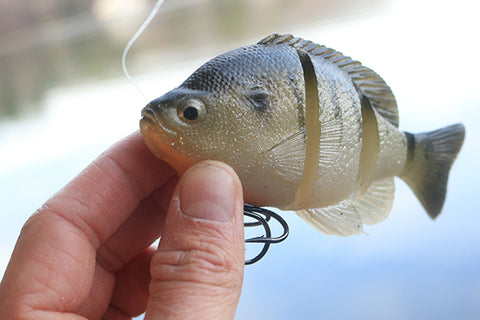Saltwater fishing lures come in all shapes and sizes, each designed to attract a specific type of fish. So, how do you know which one to choose? Well, that depends on what kind of fish you're trying to catch. Visit a bait and tackle shop or a website like Eat My Tackle, and you’ll find a wide range of fishing lures available. For beginning and novice anglers, selecting the proper lure is as important as any piece of offshore fishing gear. The right lure can truly improve your catch rate, and doing so will build up your confidence as an angler. A poor selection of a lure, on the other hand, may simply waste your time and discourage you from fishing altogether. If you're just getting started, here's a quick guide to help you select the right lure for your next saltwater fishing adventure.

Get the Right Size
The first step is to identify the kind of fish you're targeting. Saltwater fish can be divided into two broad categories: pelagic and demersal. Pelagic fish swim in open water, while demersal fish stay near the bottom. Each type of fish is attracted to different kinds of lures. Once you've determined the type of fish you're after, you can narrow your search to lures that are known to be effective for that species. Smaller lures measuring an inch or two are great for bluegills, perch, and crappies. An inch to three inches is more suitable for white bass and river trout. Smallmouth bass needs a lure ranging from 2 to 5 inches, while a range of 2 to 6 inches is ideal for largemouth bass. Walleyes require 3 to 6 inches, while you may choose from 3 to 7-inch lures for lake trout and salmon. For northern pike and muskies, try a lure measuring 4 to 12 inches.

What’s the Depth of Your Fishing Grounds?
Most experienced fishermen recognize that game fish tend to go to different spots depending on the season. These spots have different depths, so you need suitable lures for them. In the summer months, fish tend to go to deeper water so you’ll need deep running lures. They go to shallower waters in the fall. This is also true in spring when game fish spawn and look for food in shallower waters. For these areas, you’ll need to use shallow running lures and surface lures instead. Fortunately, there's an easy way to find out. Just contact us at Eat My Tackle, and we'll be able to tell you what depth of water you're likely to find fish in and recommend the best lure for your needs.

Cover Conditions
Saltwater fishing is a bit different than your typical freshwater fishing. You don't just have to worry about the type of fish you're going after, but also the species of saltwater fish you might encounter. If you're saltwater fishing for northern pike and largemouth bass, you'll be fishing in spots with lots of weeds all year. To keep your lures from snagging, try to bring a lure with a weed guard. For fishing around cover especially during early morning or early evening, use surface lures instead. Saltwater fishing equipment is generally sturdier and can handle the wear and tear of fishing in weedy areas better than freshwater gear. So if you're serious about saltwater fishing in weedy areas, make sure to invest in some good quality saltwater gear.

Water Temperature
If you're saltwater fishing, the temperature of the water can be a big factor in choosing the right lure. In general, cold water tends to lessen fish activity significantly so you may want to use a smaller lure which you should present slowly. For northern pike and muskies, your ideal lures are jerk baits and gliders, preferably with a pause in between your retrieve. When the water is warm, the fish become more active in their metabolism, and they tend to feed more often. Now you can use your spinnerbaits, inline spinners, and crankbaits with fast retrieves. Of course, there are exceptions to every rule, and ultimately the best way to figure out which saltwater fishing lure is most effective is to experiment. But knowing the general trends can help you save time and increase your chances of success when you're saltwater fishing.

Color Choices
The color of your bait can have a big impact on whether or not you'll be successful in landing a catch. In saltwater fishing, different types of fish will be attracted to different colors. This could be due to increased or reduced clarity in the water, species of fish, or a myriad of other factors. There are many different theories regarding the color of your lure, and experts also have their own opinions as to how the clarity of the water affects the color. The general rule is that in clear water you should use lures with lighter colors. In stained waters, use fluorescent colors. Others say that you should use dark-colored lures when it is overcast and light colors when the day is bright and sunny. It's important to have a good selection of saltwater fishing equipment in all different colors. That way, you'll be sure to have the right bait for whatever type of fish you're hoping to catch.

